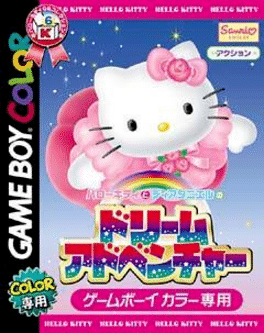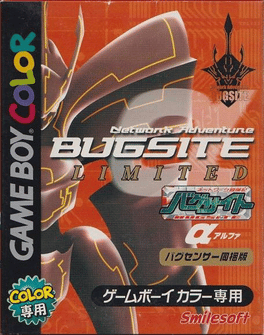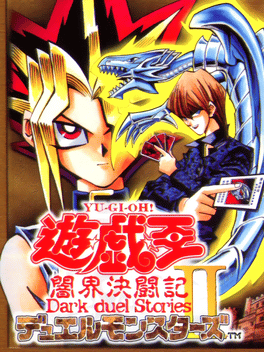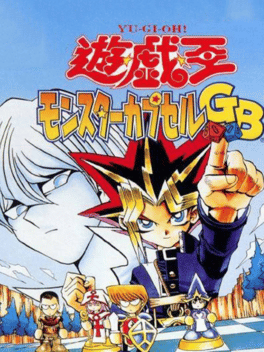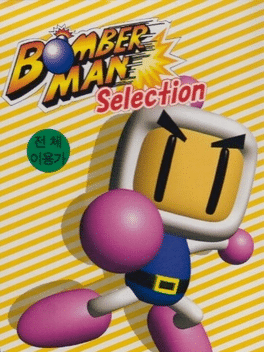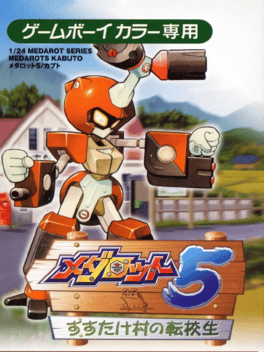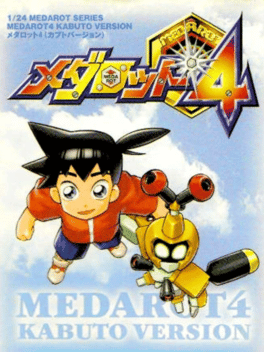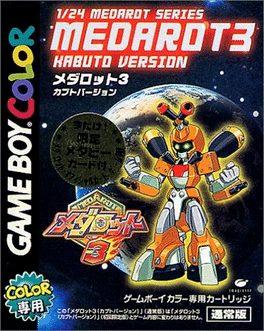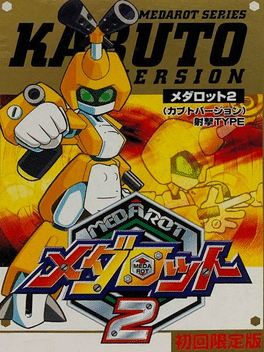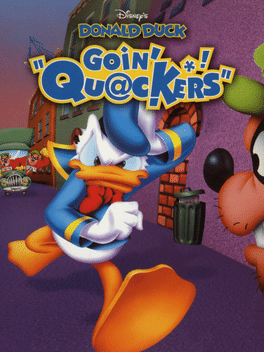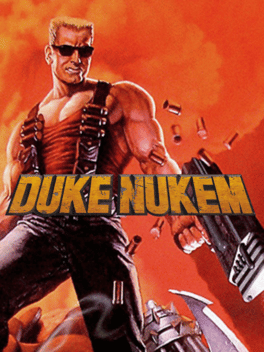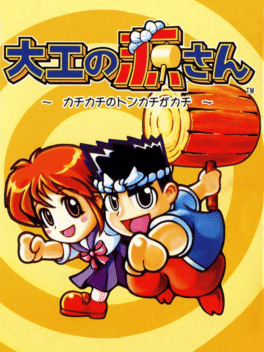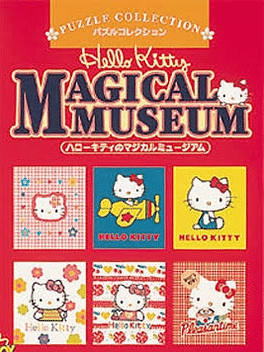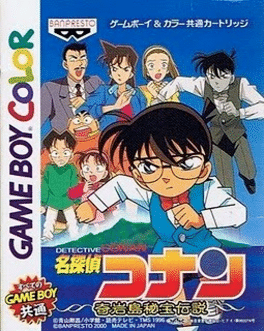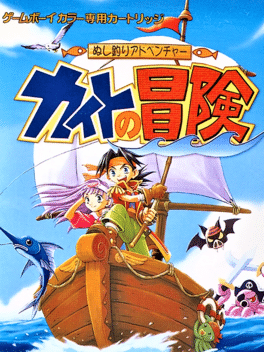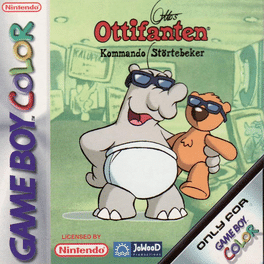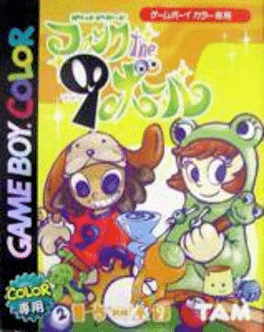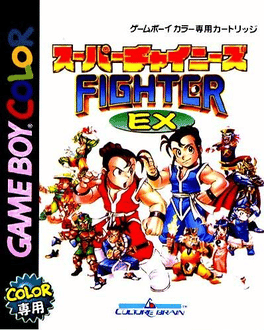Most Popular Gbc Games - Page 41
-
Hello Kitty to Dear Daniel no Dream Adventure
2001
Platformer game starring Hello Kitty and Dear Daniel. -
Network Adventure Bugsite: Alpha
2001
Network Adventure Bugsite is a monster training Game Boy Color game exclusive to Japan. It was released in two versions, Alpha and Beta. It is an RPG where players enter a virtual world known as Bugsite which is filled with "Bugs". Bugs act as virtual pets and can be used to battle other players. -
Yu-Gi-Oh! Duel Monsters II: Dark Duel Stories
1999
Yu-Gi-Oh! Duel Monsters II: Dark Duel Stories is a video game for the Game Boy Color, the sequel to Yu-Gi-Oh! Duel Monsters. Although the gameplay is still much simpler than the OCG, this game introduced 355 new cards, for a total of 720 (in contrast with the 365 total cards of its predecessor). Trap Cards and Ritual Spell Cards were first included in this game. -
Yu-Gi-Oh! Monster Capsule GB
2000
Yu-Gi-Oh! Monster Capsule GB is a video game for the Game Boy Color. It has only been released in Japan. The game takes most of its inspiration from the manga's Monster World story arc and the Capsule Monsters stories, using both Duel Monsters and Capsule Monsters. -
Bomberman Selection
2003
Bomberman Selection
2003
Bomberman Selection was a Korean-exclusive Game Boy Color compilation cartridge. -
Medabots 5: Susutake Mura no Tenkousei
2001
Medarot 5 was released in 2001 for the Game Boy Color. It was released on two versions: Kabuto and Kuwagata. -
Medabots 4
2001
-
Medarot 3 Kabuto Version
2000
Medarot 3 was released in 2000 for the Game Boy Color. It was released in two versions: Kabuto and Kuwagata. The game follows Ikki Tenryou and his friends in the town of Omikuji. After Ikki robottles with the Screws, everyone's Medarotch data is suddenly deleted by an unknown figure. Medarot 3 introduced various new gameplay aspects, including Medachange and Medalias. -
Medarot 2: Kabuto Version
1999
Medarot 2 was released in 1999 for the Nintendo Game Boy. It's a direct sequel to Medarot 1, and follows the first adventures of Ikki Tenryou and his friends in the town of Omikuji. Unlike its predecessor, Medarot 2 can be played in full color on a Game Boy Color. Like the other RPGs, the game was released in two versions where the main difference is the player's starting Medarot: Kabuto (Rhinoceros beetle, Metabee) and Kuwagata (Stag beetle, Rokusho). Along with the starting Medarots, there are some Medarots and Medals that can only be obtained in a specific version. A remake of the game for Game Boy Advance, titled Medarot 2 Core, was released in 2002. While the remake saw releases in North America and Europe, the original Game Boy version of Medarot 2 has never been translated into English. -
Disney's Donald Duck: Goin' Quackers
2000
Released in conjunction with 3D versions on consoles, Donald Duck's adventure on the Game Boy Color is a traditional side-scrolling platformer. The evil magician Merlock has kidnapped Duckburg Times reporter Daisy Duck. Donald Duck turns to Gyro Gearloose for help, who suggests using his latest invention: a powerful teleporter. Unfortunately, Merlock learns of their plans and steals the blueprints to the device. Now Gyro uses the unfinished machine to teleport Donald to various locations, where he is to find the parts of the blueprints, so he may confront Merlock and rescue Daisy. -
Duke Nukem
1999
Duke Nukem
1999
Duke Nukem is back in this self-titled game. Duke Nukem has become famous and because of that attracted the attention of the alien Zorgonites. The Zorgonites want to abduct Duke to let him lead their armies to conquer the universe. Duke Nukem on the Game Boy Color is a classical jump and run platform game where you can walk, shoot, jump, climb ladders, hang from ledges, crawl, but also mount vehicles such as a little tank and space ship. You have to avoid enemies and hazardous environments. Levels will bring you on board a Zorgonite spaceship, the moon, LA and other locations. -
Daiku no Gen-san: Kachikachi no Tonkachi ga Kachi
2000
Daiku no Gen-san: Kachikachi no Tonkachi ga Kachi is an action/platforming game developed by Biox and published by Gaps for the Game Boy Color platform. Daiku no Gen-san: Kachikachi no Tonkachi ga Kachi was never released outside of Japan. -
Hello Kitty no Magical Museum
1999
Hello Kitty no Magical Museum is a Puzzle game, developed by Atelier Double and published by Imagineer, which was released in Japan in 1999. -
Detective Conan: Kigantou Hihou Densetsu
2000
Kigantou Hihou Densetsu (Eng. "The Legend of Treasure on a Strange Rock Island") is a top-down adventure game from Meitantei Conan series featuring Edogawa Conan (real name is Kudou Shin'ichi) as a protagonist on a case to solve the mystery on the Kigantou island. However, Conan is not the only character you can control in the game, beside him you can control Shin'ichi's girlfriend Ran, her father, the renowned detective thanks to Conan, Kogoro, Ran's high-school girlfriend, Sonoko, and Conan's classmates Mitsuhiko, Ayumi and Genta. Based on the character you control, certain areas may be accessible or inaccessible, and certain dialogues and dispositions from other characters may vary. The story starts with Togawa sisters, Satomi and Miki, receiving a golden statue. They lost their parents at an early age, never knowing what actually happened to them. One day, a letter came from a wealthy person living on an island somewhere in the western Japan Sea. Upon receiving this letter, they realized the golden statue belo -
Nushi Tsuri Adventure: Kite no Bouken
2000
Nushi Tsuri Adventure: Kite no Bouken is a Sports game, developed by TOSE and published by Victor Interactive Software, which was released in Japan in 2000. The series is a cross between Harvest Moon and Final Fantasy / Dragon Quest. The first game finds the protagonist setting off on a quest to find a legendary fish, said to cure a life threatening illness his sister is suffering from. But like any quest, there will be plenty of obstacles in true RPG style. -
Otto's Ottifanten: Kommando Stortebeker
2001
Ottifanten: Kommando Störtebeker is an auto-running 2D platformer. Baby Bruno goes on a search after his missing teddy bear Honk, through four worlds of six stages each. -
Pocket Billiard Funk: The 9 Ball
2000
Pocket Billiard Funk: The 9 Ball is a Sports game, published by Tamsoft, which was released in Japan in 2000. -
Super Chinese Fighter EX
1999
Super Chinese Fighter EX is a fighting video game for the Game Boy Color released by Culture Brain in 1999. It is part of the Super Chinese series and is the final Fighter game in the series. Unlike most of the Super Chinese games, Fighter EX is not an action game or role-playing video game. The game features several characters from the Super Chinese series, including the main characters, Jack and Ryu. -
Sylvanian Families: Otogi no Kuni no Pendant
1999
An ivory rabbit called Aster Dandelion ventures into the heart of the forest during a picnic and aids an injured fairy. She is left with a magical pendant that has a mysterious power that turns reality into dreams at the stroke of six in the evening. Now Aster has a quest to return the pendant to Fairyland while she tries to carry on with her daily life. In Sylvanian Families: Otogi no Kuni no Pendant the player navigates Aster around Sylvania Village, talking to her acquaintances, interacting with objects and completing various tasks, whether she’s at home, school or at a friend’s house. Various mini-games must be won to earn seeds for growing flowers as well as furniture to decorate Aster’s bedroom. There’s also optional side quests such as sprinkling vividust on wilted flowers.
